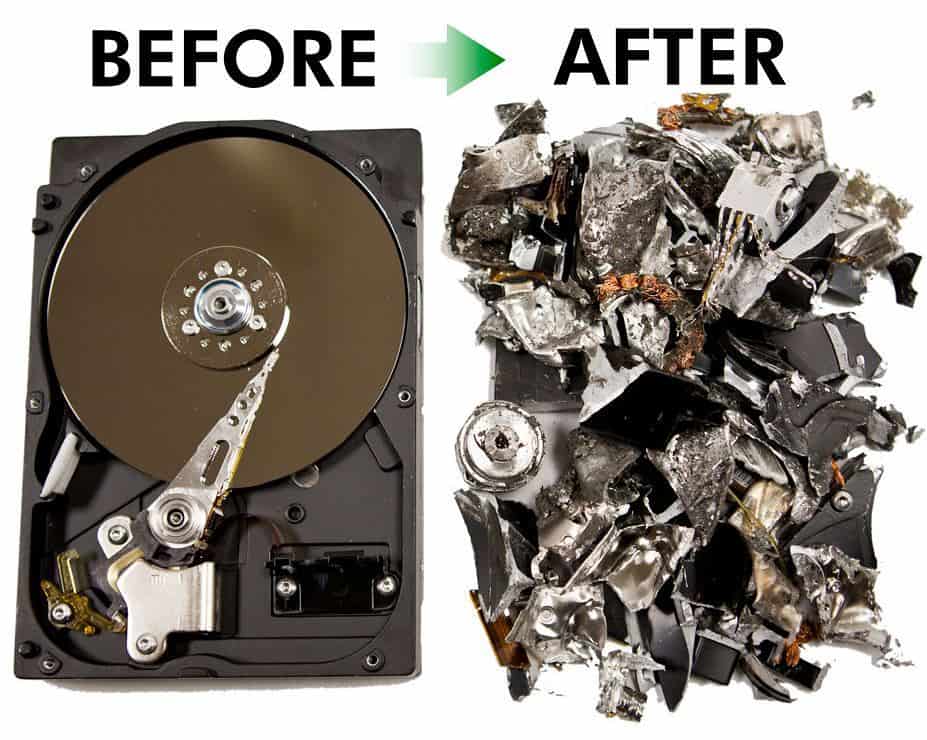Just How Correct Data Damage Adds to Robust Computer System Safety And Security Services and Mitigates Threats of Data Violations
In today's digital landscape, the significance of appropriate information damage can not be overemphasized, as it serves as a basic component of detailed computer system protection solutions. By implementing effective information erasure strategies, companies not just safeguard delicate details from unauthorized accessibility but likewise boost their compliance with regulatory structures - data destruction. However, the ramifications of insufficient data destruction extend past plain conformity; they can greatly influence a company's cybersecurity posture and online reputation. Understanding these dimensions increases vital questions about the practices in position and their performance in an age of escalating cyber dangers.
Relevance of Data Destruction
In today's digital landscape, the importance of data devastation can not be overstated. As companies increasingly count on electronic assets, the prospective threats linked with data breaches and unapproved accessibility magnify. Efficient information destruction is a vital component of a thorough info protection strategy, protecting delicate info from falling right into the hands of destructive stars.
When data is no longer needed, just deleting files or formatting hard disks wants. Recurring information can typically be recovered making use of conveniently offered devices, posturing considerable dangers to both companies and people. This highlights the necessity for durable data devastation practices that make certain all data is irretrievably removed.
Furthermore, regulative compliance requireds, such as GDPR and HIPAA, emphasize the obligation to shield sensitive data, including its proper disposal. Non-compliance can result in severe lawful effects and financial charges. data destruction. Therefore, incorporating effective data devastation protocols not just boosts protection however likewise fortifies an organization's reputation and credibility

Methods of Secure Information Erasure
Numerous reliable approaches of safe information erasure can be employed to make certain that sensitive information is completely removed from storage space devices. One widely identified technique is information overwriting, which entails replacing existing data with arbitrary patterns several times. This technique dramatically minimizes the opportunities of data healing, although it may not work against advanced forensic methods.

Physical destruction is additionally a dependable technique, where storage tools are rendered unusable with shredding, squashing, or incineration. This method makes sure that information can not be recuperated whatsoever but calls for careful handling of hazardous products.
Finally, specialized software tools developed for safe information erasure supply performances that adhere to various erasure criteria. These tools commonly consist of functions like confirmation processes to confirm effective information destruction.
Utilizing these approaches in mix can improve data protection and reduce the risks linked with information violations, guaranteeing that sensitive information is not accidentally subjected.
Legal and Conformity Factors To Consider
The approaches employed for secure information erasure not just serve to safeguard sensitive details but additionally needs to line up with lawful and compliance structures regulating information security. Organizations are required to stick to various guidelines, such as the General Data Protection Policy (GDPR), the Health Insurance Mobility and Liability Act (HIPAA), and the Settlement Card Sector Data Safety Standard (PCI DSS) These laws mandate specific protocols for data taking care of and damage, making sure that individual and delicate information is irretrievably eliminated when no longer needed.
Failing to adhere to these legal requirements can cause considerable charges, including penalties and reputational damages. Additionally, organizations need to preserve records of data destruction processes, demonstrating compliance throughout audits or examinations. This documents not only shields versus lawful consequences however additionally reinforces count on with stakeholders and clients, showcasing a dedication to data protection.
Integrating lawful and compliance factors to consider right into data devastation methods is necessary for any kind of organization. It lessens the danger of data breaches and shows a proactive technique to protecting sensitive information, inevitably fostering a society of safety and security and liability across the organization.
Impact on Cybersecurity Position
Reliable data damage considerably boosts a company's cybersecurity stance by decreasing the prospective assault surface for cyber threats. When sensitive data is not effectively ruined, it stays available to destructive actors that can manipulate this information for unauthorized access, identity theft, or corporate espionage. By applying durable data visit site damage methods, organizations can properly minimize the danger of data violations and enhance their overall protection framework.
In addition, the safe and secure disposal of unneeded or outdated data not just protects delicate info however additionally helps organizations follow sector regulations and standards. Failing to adequately ruin information can result in severe lawful repercussions and reputational damage, further endangering a company's cybersecurity stance.

Eventually, focusing on efficient data destruction is essential for cultivating a robust cybersecurity stance, making certain that organizations remain alert against developing cyber risks while safeguarding their critical properties and stakeholders.
Ideal Practices for Organizations
Executing ideal practices for data damage is vital for companies aiming to guard delicate info and mitigate cybersecurity threats. First and foremost, organizations must establish a comprehensive information devastation policy that details obligations and treatments. This policy needs to follow appropriate laws, such as GDPR or HIPAA, making certain legal conformity.
Secondly, it is important to use accepted information sanitization approaches, including data wiping, degaussing, and physical destruction, customized to the type of information and storage space medium. Employing qualified experts for information destruction solutions enhances the integrity of these techniques.
Furthermore, organizations should keep an in-depth stock of all information storage devices, guaranteeing that all outdated or replaced devices goes through devastation. Regular audits of information devastation techniques can aid determine weak points and boost compliance.
Worker training is another vital aspect, as staff should understand the value of information devastation websites and adhere to established methods. Lastly, companies need to document all data devastation tasks to offer accountability and traceability, which can be vital throughout audits or in case Find Out More of a breach.
Final Thought

One extensively identified strategy is information overwriting, which involves replacing existing information with random patterns multiple times.The methods used for safe and secure data erasure not just offer to protect delicate information however also needs to straighten with legal and compliance frameworks regulating data defense. These regulations mandate particular procedures for information taking care of and damage, making sure that individual and sensitive data is irretrievably erased when no longer needed.
By implementing robust information devastation methods, companies can properly minimize the threat of information violations and boost their total safety and security framework.
In conclusion, proper data destruction is essential for enhancing computer system security solutions and alleviating the dangers connected with data breaches. - data destruction